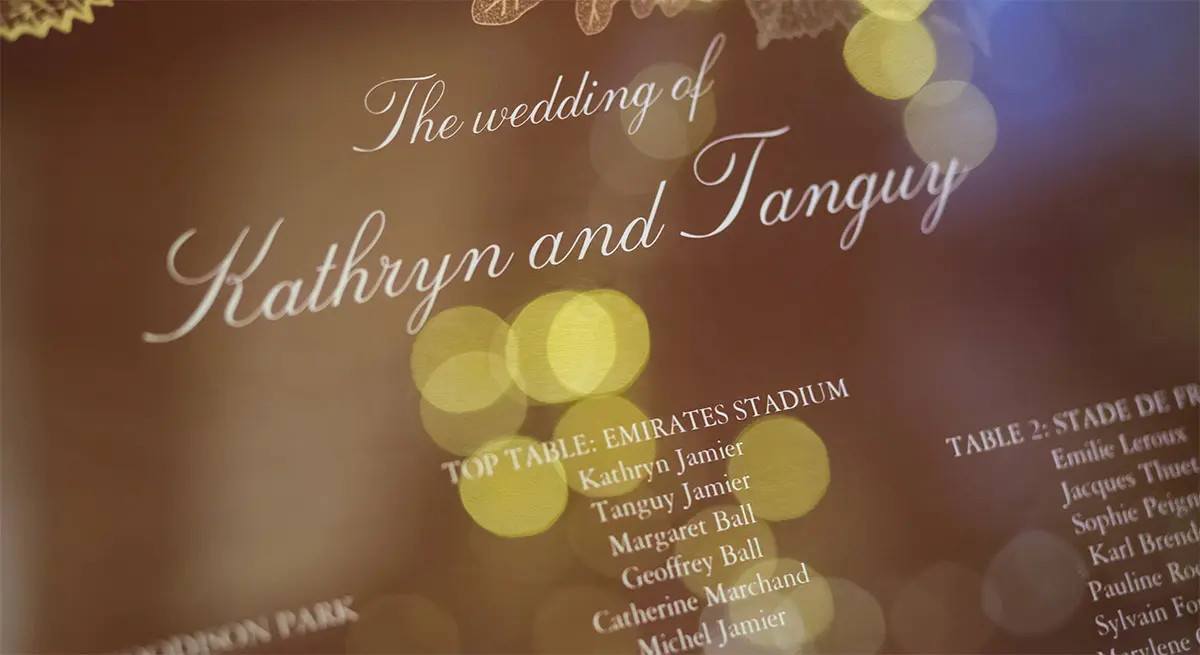How to Create a Wedding Seating Plan Without the Drama
Planning a wedding is often a magical and enjoyable experience. From picking out your dream venue to selecting stunning flowers and, of course, tasting endless samples of cake, most wedding-related tasks are the epitome of fun. Yet, when it comes to creating your wedding seating plan, it can sometimes feel less like planning your dream day and more like navigating a delicate social minefield.
Every couple wants their special day to run as smoothly as possible, but seating guests can bring a unique set of challenges. Whether it’s navigating family tensions or ensuring friends from different social circles hit it off, the wedding seating plan is one of those tasks that requires careful thought and, let’s face it, a lot of patience.
To help you avoid turning your reception into a scene from a soap opera, we’ve compiled some practical tips for crafting the perfect wedding seating plan. Let’s ensure your tables promote laughter and mingling instead of raised eyebrows and awkward silences.
Know Your Table Layout Inside Out
Before you even think about where Uncle Bob and Cousin Sarah will sit, make sure you have a clear understanding of your venue’s table layout. How many tables will you have? Will they be round, rectangular, or a mix of both? How many guests can each table accommodate comfortably?
This foundational information is crucial for creating an accurate wedding seating plan. It’s also worth confirming whether your venue can add or remove tables if your guest list changes at the last minute. Having this flexibility ensures you’re not left scrambling to fit extra chairs or, worse, asking someone to swap seats halfway through dinner.
Mix and Match to Spark Connections
While it may seem easier to seat people who already know each other together, this often leads to cliques and limits the opportunity for new conversations. A wedding is the perfect occasion to mix different groups of people and create new connections.
To achieve this, consider seating guests with similar interests but from different social circles. For example, put your friends from university next to your partner’s colleagues or pair your cousins with family friends. Aim to have at least three familiar faces at each table to ensure a comfortable start, but leave room for guests to mingle.
To make the seating process more fun and less stressful, consider using seating plan apps or websites. These tools can help you randomly assign guests to tables based on your preferences, ensuring a balanced and sociable atmosphere.
Here is one great website to explore are:
- Seating Planner (www.seatingplanner.com) – A user-friendly app that lets you easily create and adjust your seating plan. You can input guest details and preferences, and the tool will generate seating arrangements that maximise interaction and minimize awkwardness.
These tools can take the stress out of seating arrangements and help you create a fun and engaging environment for your guests.
Tackle Potential Conflict Early
No one wants drama at their wedding, so identifying potential issues in your seating plan should be one of your top priorities. Is there a longstanding feud between two relatives? Are there ex-partners who might find it uncomfortable to sit too close?
Address these challenges head-on by placing individuals with strained relationships at separate tables. If you’re worried about seating a difficult personality, consider placing them with your most sociable and easygoing guests – it can help diffuse potential tension.
Make It Fun: Get Creative with Table Themes
Planning your wedding seating plan doesn’t have to be all stress and spreadsheets. Turn it into a fun and interactive task by incorporating creative themes into your tables.
For instance, you could name each table after a shared interest, such as favourite travel destinations, books, or movies. Assign guests to tables that reflect their personalities or connections – your “Paris” table could seat the guests who bonded over your engagement trip, while your “Hogwarts” table might house your most fun-loving friends. A quirky theme gives your guests an icebreaker, making introductions smoother and conversations flow.
Keep It Flexible (But Not Too Flexible!)
While it’s important to put thought into your seating plan, remember that you can’t control everything. Unexpected things might come up – someone might cancel last minute, or a plus-one might have more in common with a different table. Be prepared to make minor adjustments but resist the urge to micromanage every seat. Your goal is to create a welcoming and enjoyable atmosphere, not a rigid seating chart that leaves no room for spontaneity.
Communicate Clearly with a Visual Seating Chart
Once your wedding seating plan is finalised, make sure it’s easy for your guests to find their seats. A beautifully designed seating chart displayed at the entrance of the reception can save time and reduce confusion. You could also use escort cards or personalised place cards to add an extra touch of elegance.
Final Thoughts
Your wedding seating plan doesn’t have to be the cause of sleepless nights or endless debates. With careful planning, a bit of creativity, and the right tools, you can arrange tables that foster lively conversations and lasting memories. Remember, the ultimate goal is to create a comfortable and harmonious atmosphere for all your guests – and maybe even spark a few new friendships.
So take a deep breath, grab those sticky notes, and start plotting your perfect seating arrangement. After all, it’s your big day!



